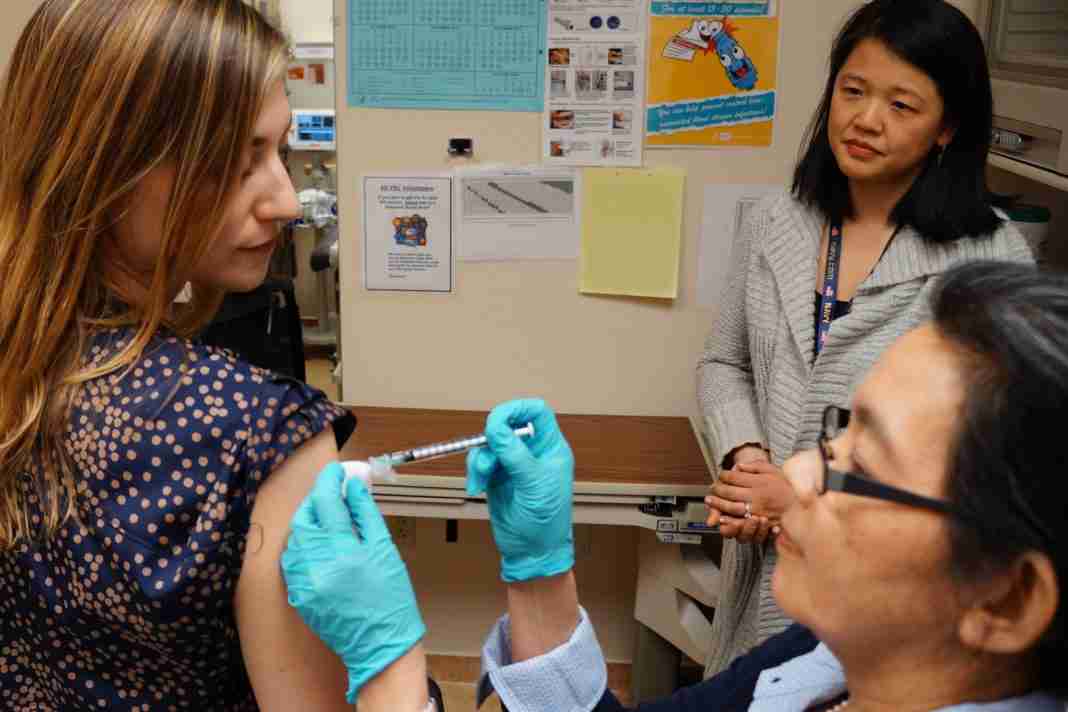Many childhood vaccines last for years, if not decades. Despite hopes for a universal flu vaccine, the vaccine for the influenza virus (flu) remains seasonal, with a new shot required at the beginning of each flu season. There are multiple reasons for the necessity of the seasonal flu shot. One lies in the structure of the virus’s genome of eight RNA segments. The RNA pieces are prone to exchanging when more than one virus enters a cell. In doing so, antigenic shifts create seemingly ever-changing strains that require new vaccines adapted to fight against them. Another challenge exists in the short-lived immunity generated by the vaccine.
A new study from a team from Emory Vaccine Center provides insights into why the flu vaccine’s immunity is shorter than other vaccines. The results are published in the article, “Influenza vaccine–induced human bone marrow plasma cells decline within a year after vaccination” in Science.
The home base for immune cells that produce antibodies is the bone marrow. Because long-term serum antibody levels are maintained by bone marrow plasma cells (BMPC), the researchers investigated the production and maintenance of these cells after influenza vaccination. Seasonal flu vaccination does increase the number of antibody-producing cells specific for flu in the bone marrow. However, most of the newly generated cells are lost within one year, the researchers found.
Most vaccine studies acquire samples of participants’ blood, which is where antibody-producing cells can be found for a few weeks after vaccination. Researchers led by Emory Vaccine Center director Rafi Ahmed, PhD, took the extra step of obtaining bone marrow samples (conducted from 2009–2018), a more invasive procedure.
In this study, 53 healthy volunteers agreed to provide bone marrow before seasonal flu vaccination and then one month after, with follow-ups for some about a year later. Vaccination increased the proportion of flu-specific cells (from an average of 0.8% to 1.9%) after a month. Yet the follow-up visit months later revealed that number had declined to baseline. This decline, the authors wrote, “was driven by the loss of BMPC induced by the vaccine, while pre-existing BMPC were maintained.”
Most people already have some flu-specific plasma cells: the type of immune cells that secrete large amounts of antibodies. So the Emory researchers needed to distinguish between antibodies made by pre-existing cells and antibodies whose production was spurred by the strains present in the seasonal vaccine.
Looking for new vaccine-specific antibody-secreting cells required analyzing both the cells’ DNA and examining the antibodies they make, and then tracking those cells’ abundance in both blood and bone marrow. For most of the newly-generated plasma cell lineages, between 70–99% of the cells were lost after one year.
“We were able to follow the specific cells produced by the vaccine because they produced unique antibodies that can be identified using sequencing techniques,” said Carl Davis, PhD, first author of the paper and a postdoctoral fellow in Ahmed’s laboratory.
“We could see that these new antibodies expanded in the bone marrow one month after vaccination and then contracted after one year. On the other hand, antibodies against influenza that were in the bone marrow before the vaccine was given stayed at a constant level over one year.”
“What this shows is that just getting to the bone marrow is not enough,” Ahmed said. “A plasma cell has to find a niche within the bone marrow and establish itself and undergo gene expression and metabolism changes that promote longevity.”
Some good news, especially for people participating in vaccine studies, is that the levels of antibody-secreting cells in blood correlate with long-term response in the bone marrow. So vaccine researchers can continue to monitor immune responses by looking for antibody-secreting cells in blood.
Also, vaccine additives called adjuvants could be expected to increase long-term bone marrow homing for antibody-secreting cells, Ahmed said. Standard inactivated flu vaccines do not contain adjuvants.
Adjuvants also promote the formation of germinal centers, structures in the lymph nodes where plasma cells producing high-affinity antibodies are generated. These structures may be important for encouraging long-lived plasma cell formation.
The findings are expected to inform the design of proposed longer-lasting “universal” flu vaccines. Strategies to enhance the persistence of BMPCs will be important for the next-generation of influenza vaccines.
